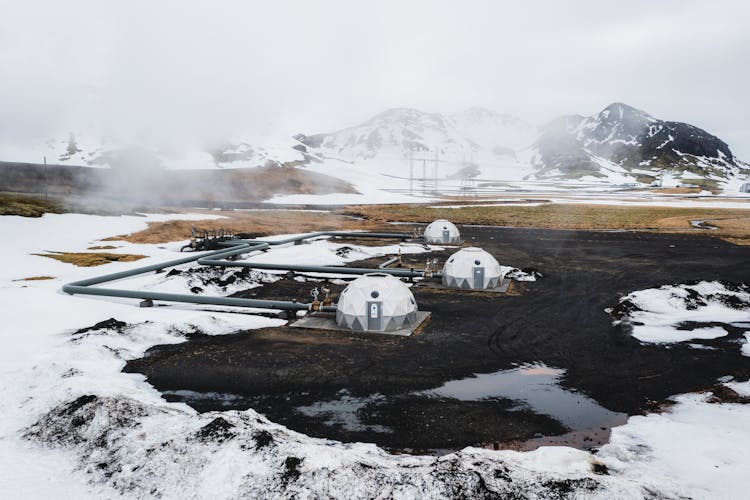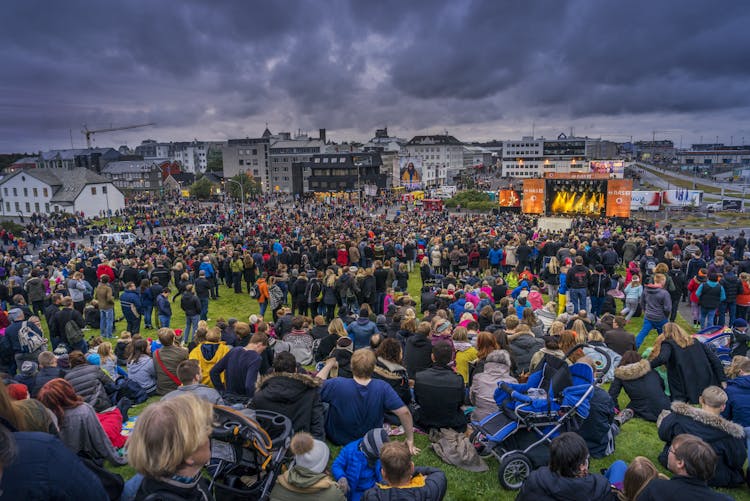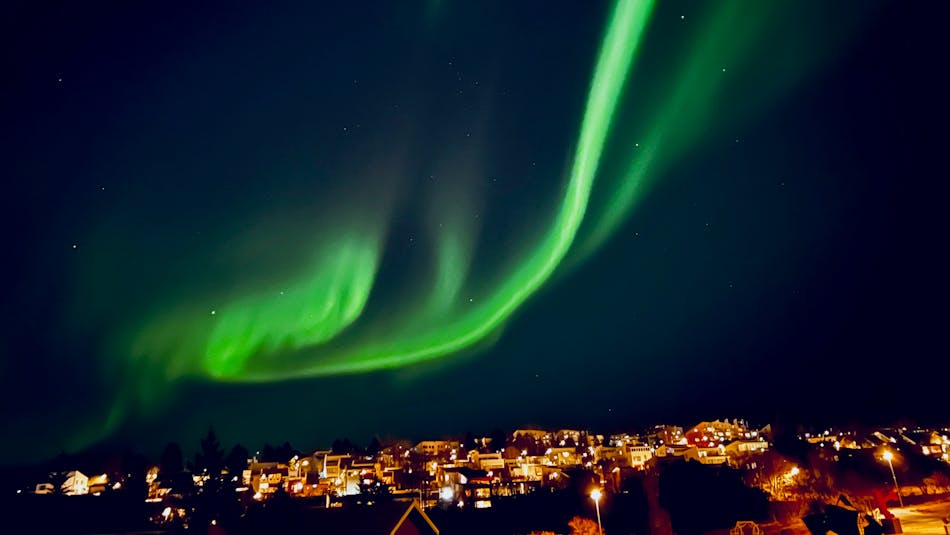
Northern Lights over Reykjavík taken with an iPhone.
Unlock the secrets to photographing the aurora with your smartphone. Discover practical tips for immortalizing nature's most mesmerizing light show.
For many, glimpsing the Northern—or Southern—Lights is an awe-inspiring experience they have waited years to see. Rightly so. Witnessing colorful lights dance across the sky is mesmerizing and slightly eerie. From late August to early April, the skies over Iceland are dark enough to see the lights. Although the lights are always active (no, it has nothing to do with the cold weather), between late August and early April, the Icelandic skies become sufficiently dark to reveal their full splendor.
Are you keen to capture Mother Nature's elusive show? You're certainly not alone in wanting to share this magic with friends and family—and show them what they are missing. Thankfully, you don't need a high-end full-frame camera and expensive wide-angled lenses with 1.2 aperture—although those are excellent choices. Advancements in smartphone technology now allow us to capture the Northern Lights and other low-light scenes effectively. The settings are relatively easy, and the results can be stunning. Experiment and practice your setup before you get out in the field! The more you practice, the better (and faster) you'll get. Before heading out, familiarize yourself with your device's settings and practice; tweaking settings with cold fingers is less fun. Trust me on that!
Smartphone Photography Tips for the Northern Lights:
- Guided Tours: Consider joining one. Experienced guides know the best spots, understand the terrain and can predict weather conditions. Relax and await the luminous show. Book a Northern Lights tour now
- Steady Tripod: Essential for long exposures in low light. Some tripods have hooks to add weight, ensuring they remain grounded in Iceland's sometimes fierce winds.
- Manual Focus: Lock your focus to infinity. In low light, cameras might have difficulty focusing. Adjust manually until the aurora appears sharp.
- No Flash: Models like the iPhone 11 Pro and newer have Night mode. Use it to adjust your exposure time (around 10-15 seconds) to capture the aurora's dance.
- Apps: If your default camera lacks manual controls, consider apps like Northern Lights Photo Taker, NightCap Camera, ProCamera, and Slow Shutter for iOS. For Android, ProCam X Lite is a good choice.
- Screen Brightness: Dim your screen. A bright screen can hinder your night vision and may disturb others who are not so enthusiastic about your bright screen.
- Shoot in RAW: This format captures more details, offering better post-processing opportunities to bring out the details in your pictures.
- Battery Backup: Cold can deplete your battery faster. Bring a power bank if you plan to stay out for extended periods.
- Experiment: Play with exposure times, lenses, and framing. Including some of the landscape can give a sense of scale to the aurora.
- Dress Warmly: We cannot emphasize this enough. Icelandic weather can be harsh. Dress appropriately to stay cozy.
- Savor the Moment: While photographing the Northern Lights is rewarding, take time to immerse yourself in the experience without any gadgets. Sometimes, fond memories are the best capture.
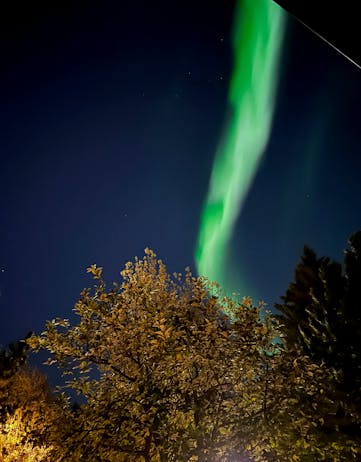
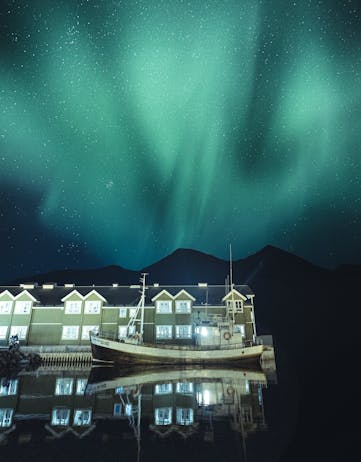

The Northern Lights over the suburbs of Reykjavík. Photo: Parker O'Halloran. The Northern Lights shine bright over Siglufjörður, North Iceland. Photo: Iceland Explorer. The Lights over a waterfall. Photo: Witness.
.jpeg?ixlib=gatsbyFP&auto=compress%2Cformat&fit=max&rect=0%2C0%2C2075%2C2075&w=90&h=90)

